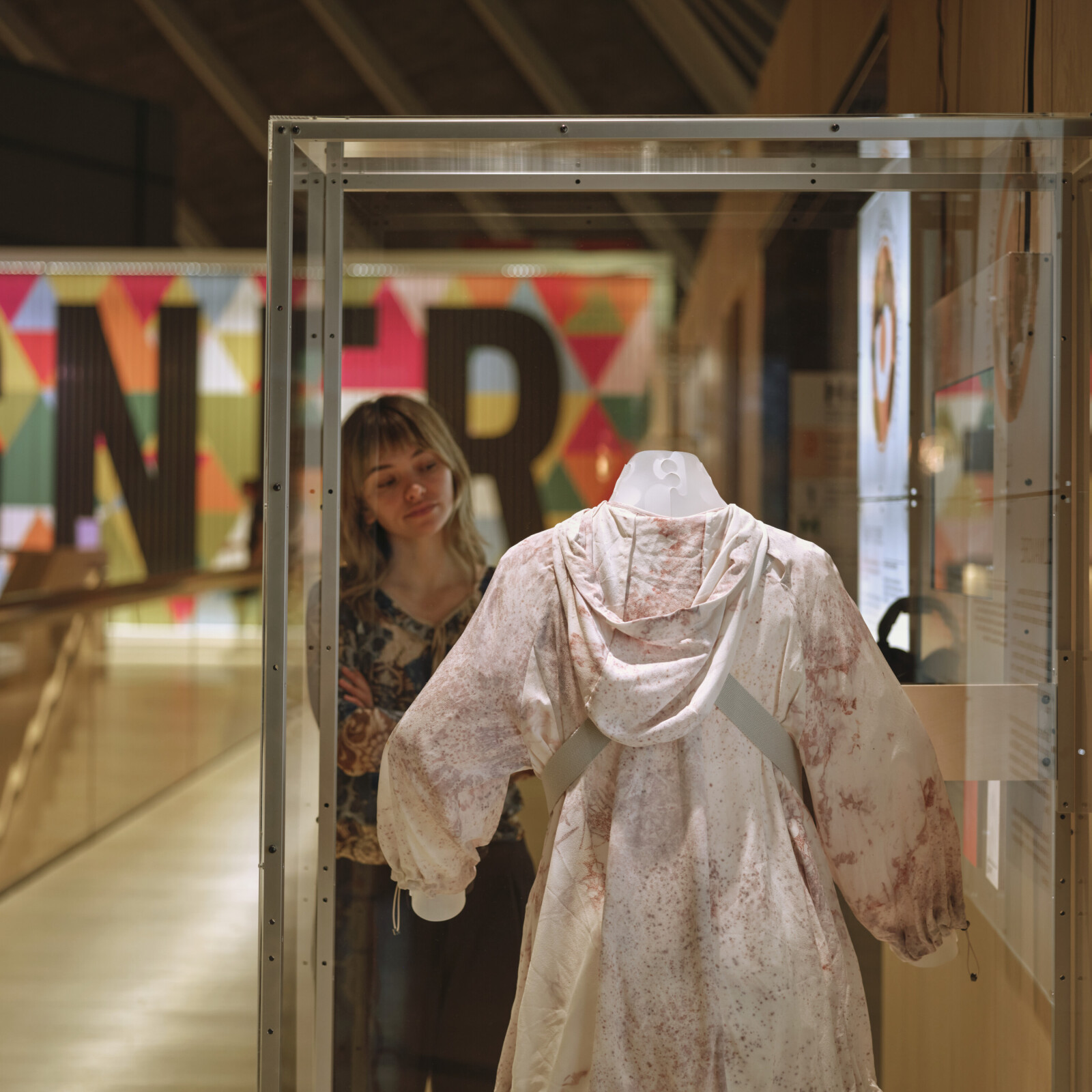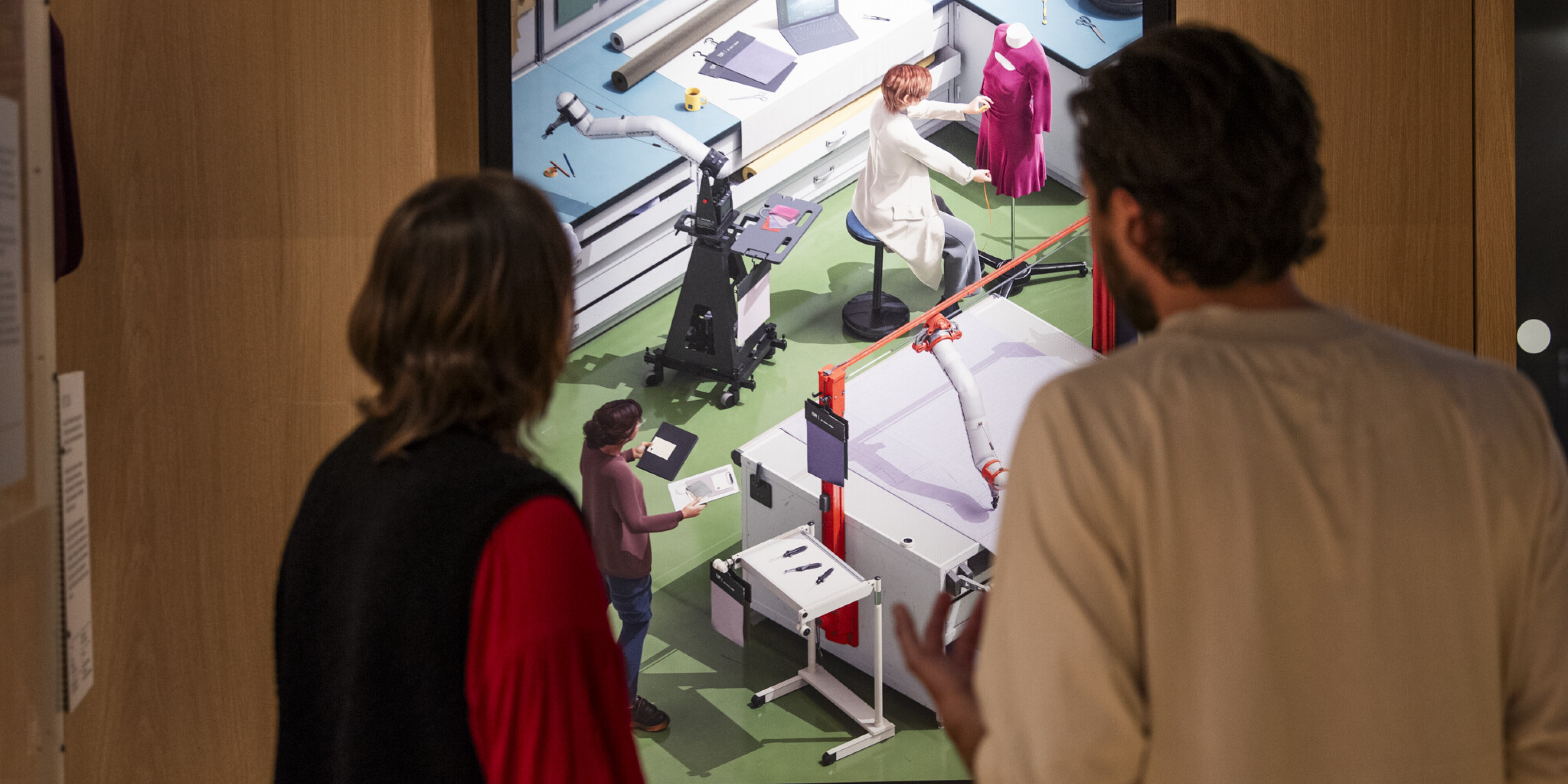
How do we know which directions to take, if we don't know where we're heading?
As a team constantly thinking about the future of design, we often find ourselves wondering what that future might look like. Being able to imagine the futures we are working towards is an important step in designing those futures.
There is a rich history of envisioning ‘future scenarios’ in design. One thinks of the mid-century stalwarts such as Archigram, Superstudio or Buckminster Fuller who created images envisioning future cities that were at once high-tech, playful and radically utopian. More recently, Olalekan Jeyifous’ work at the 2023 Venice architecture biennale portrayed a future global transport system built on indigenous knowledge systems through expressive images and sculptures, while closer to home Space Popular’s Fables for Our Time triptych for Future Observatory at the Design Museum uses emojis and fictional characters to create new narratives about the future of design.
For Tomorrow’s Wardrobe, Future Observatory’s display on the future of fashion, the curatorial team were keen to explore similar territory, using image-making and worldbuilding to imagine and depict possible futures for a more sustainable industry. True to the focus of the Future Observatory programme, these futures would need to be informed by ongoing design research both from within our funding portfolio and the broader ecosystem of UKRI-funded projects underway today.
With this intention in mind, the Tomorrow’s Wardrobe curatorial team brought together a creative team consisting of Berlin-based illustrator Max Guther and three leading researchers from fashion and textiles – Kate Goldsworthy, Susan Postlethwaite and Alexa Pollmann – to produce three illustrations, each one corresponding with a section of the Tomorrow's Wardrobe display that depict an imagined scene in the late 2030s.
To develop the commissions, the team went through an in-depth process of meetings, workshops, moodboarding and speculating on the future of different parts of the fashion and textiles industry. Building on her research into recyclability and circularity in textile and fashion contexts, Kate Goldsworthy informed the direction of the first illustration accompanying the ‘Textile Landscapes’ section of the display. The resulting image explores the potential of lab-based experiments, agricultural waste and non-toxic materials.

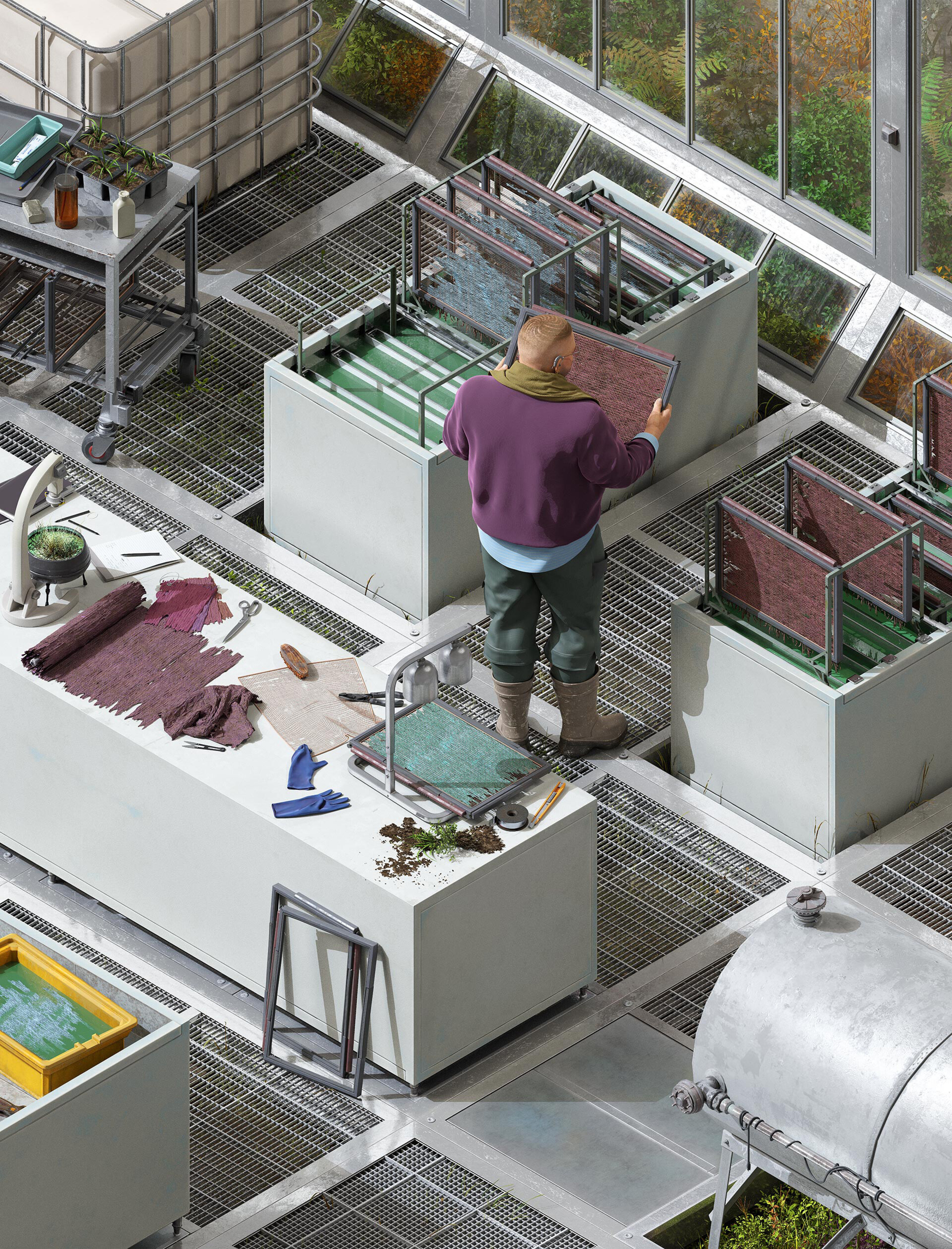
The second section of Tomorrow's Wardrobe, ‘In The Studio’, features projects changing the way fashion designers will work in years to come with a focus on tools. For the illustration, Susan Postlethwaite’s work with the Robotics Living Lab (RoLL) at Manchester Fashion Institute was a major source of inspiration. The lab is developing a new suite of collaborative robots, which small fashion and textile businesses will be able to use to bring high quality clothing production back to the UK.

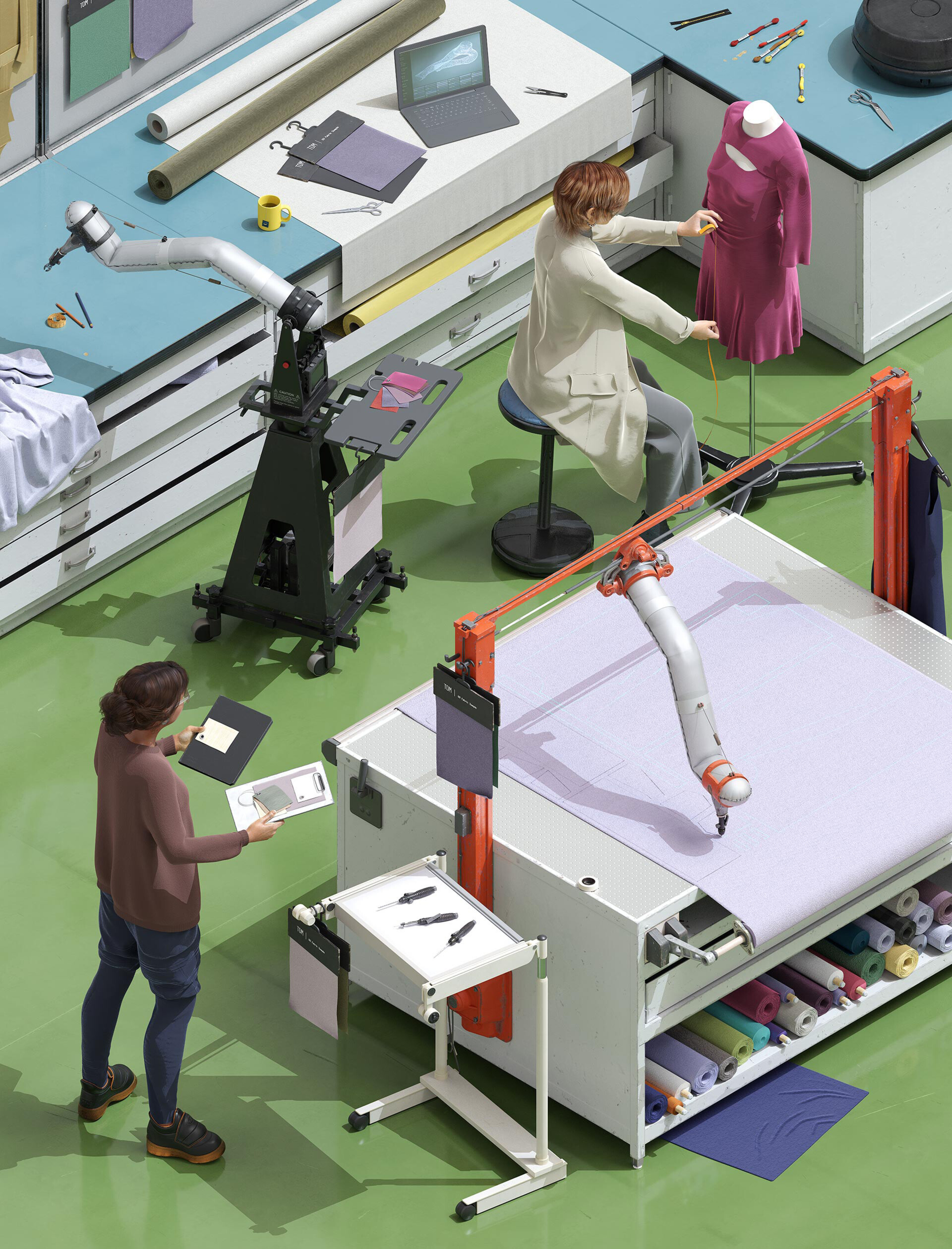
For the final section of the display, Alexa Pollmann was keen to emphasise the role of highstreets in the future of fashion. There already exists a vast network of makers and repair workers across the UK who will be vital in the future of sustainable fashion. Rather than replace those social infrastructures, this third illustration seeks to revalue and augment them with emerging technologies such as 3D printing and scanning.
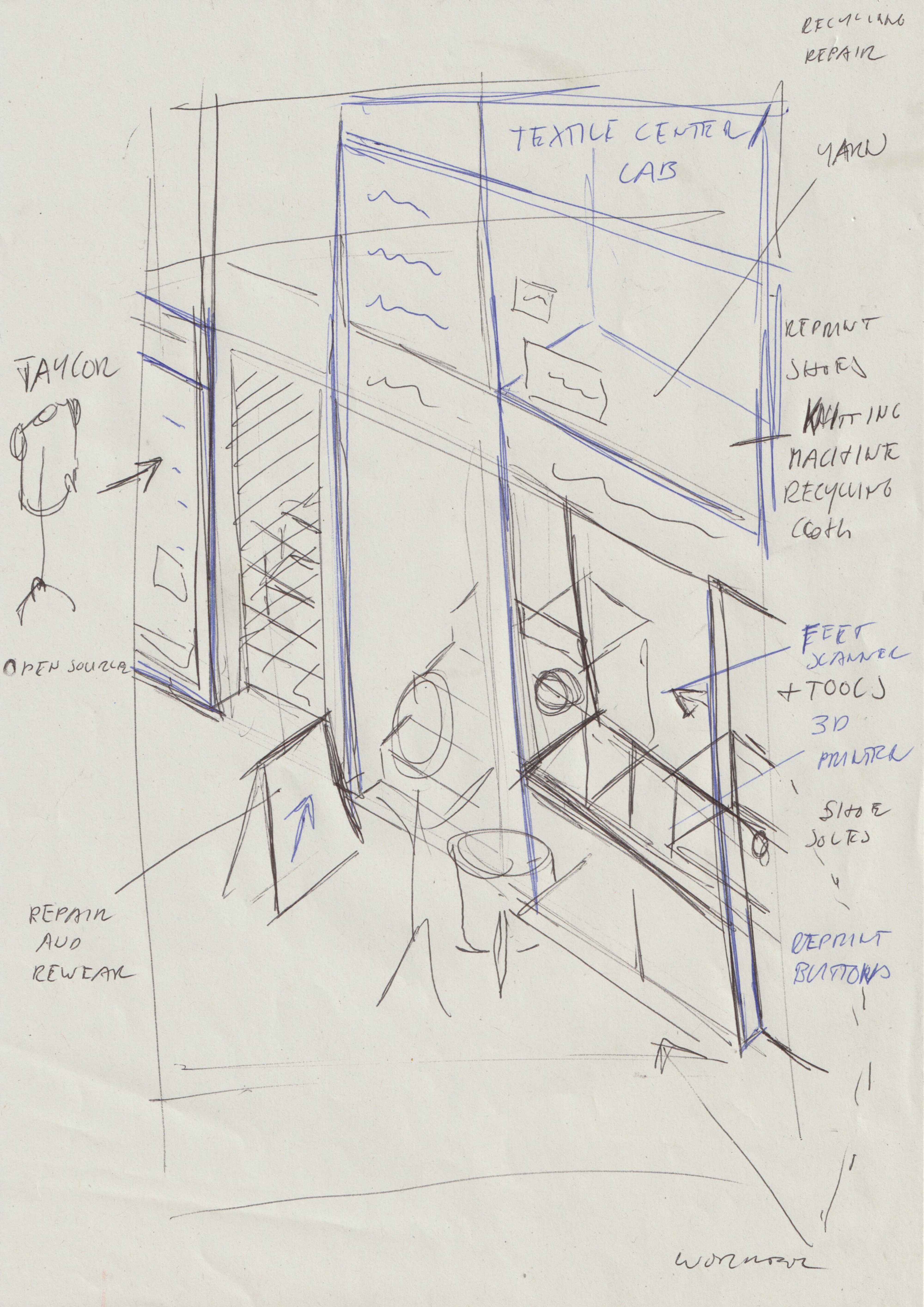
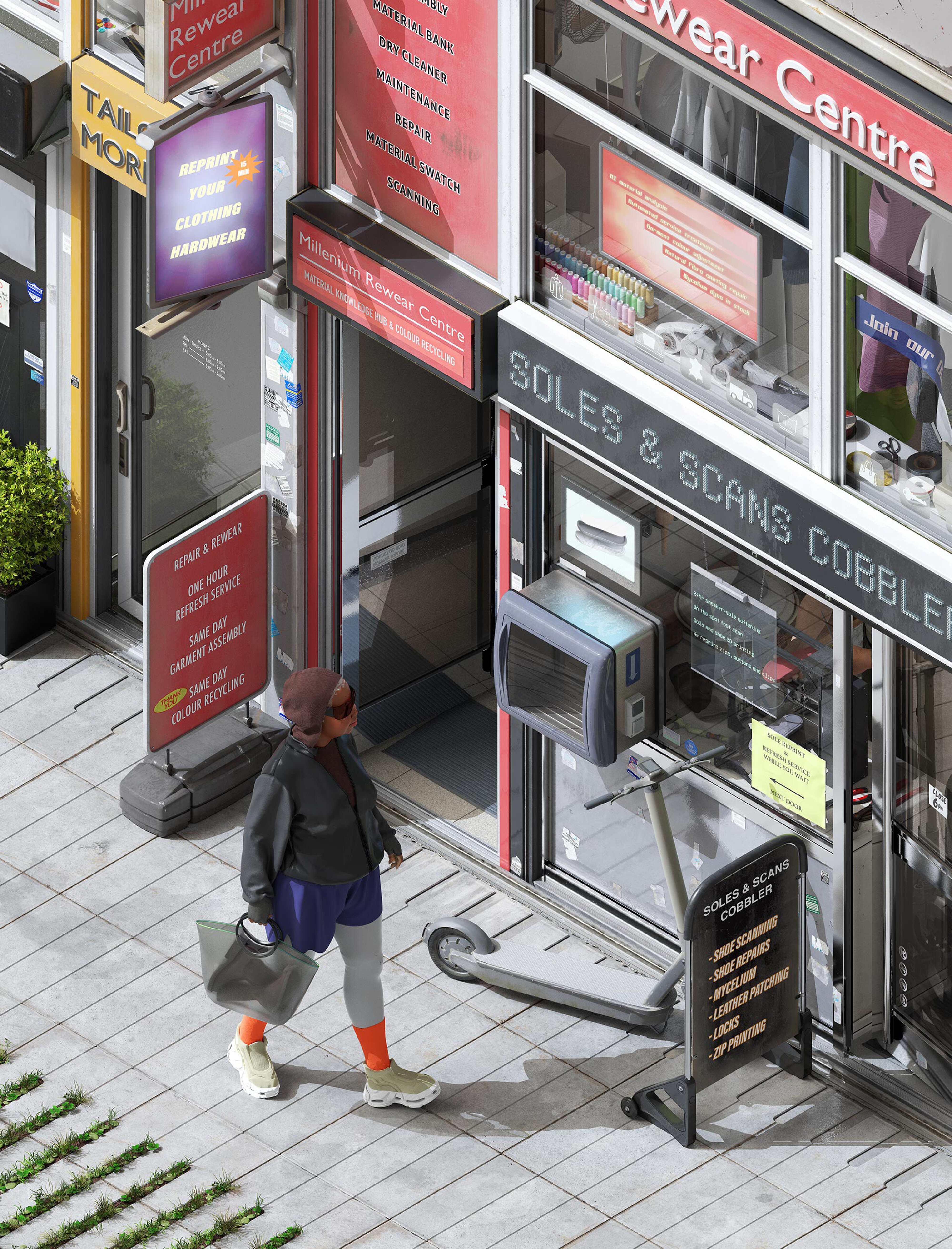
During the workshops sessions, Max Guther begun sketching initial directions for the scenes to be depicted, before going away and producing early sketches. The researchers gave feedback on the scenes, refining details, removing and adding elements, before the final drawings were signed off and sent to print. Throughout the process, the whole team were intent on presenting images that felt realistic yet optimistic, rigorously researched but imaginative and sustainable but not naive.
The research on show in Tomorrow’s Wardrobe gives us cause for hope at this moment, but there is clearly a long way to go before the fashion industry can reduce the environmental damage it causes. By imagining and visualising the futures we want to arrive at, we can begin the work of getting to them.


